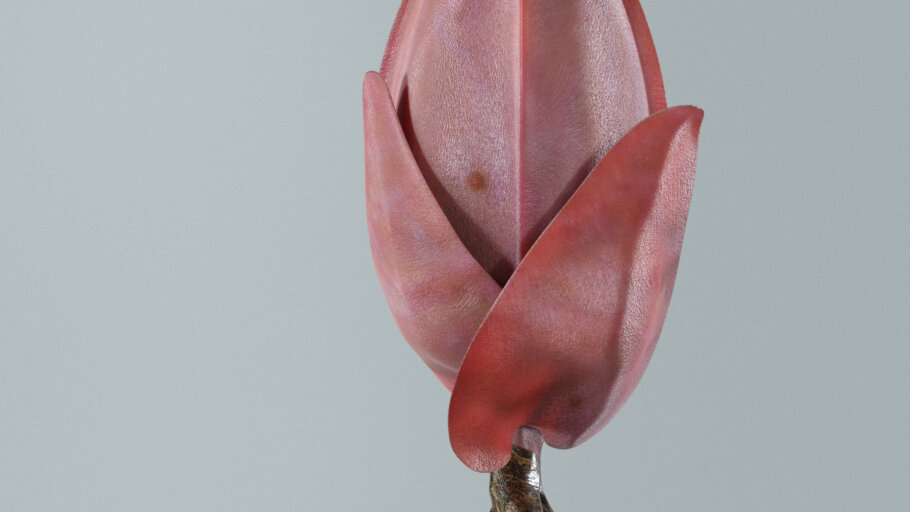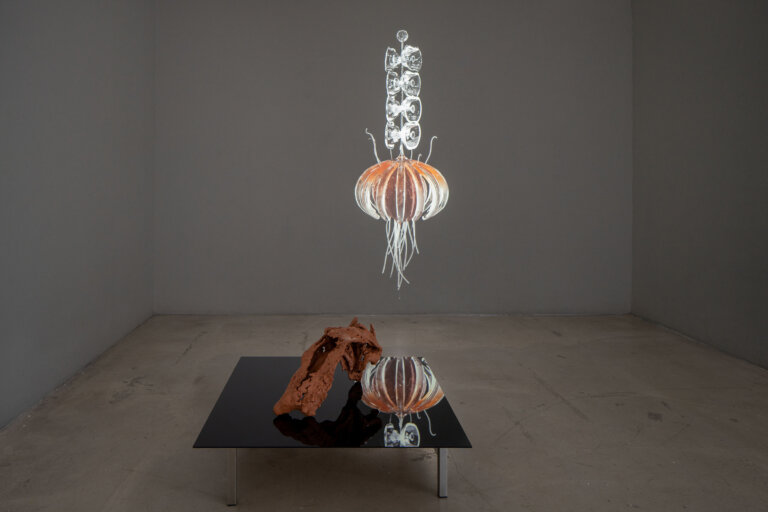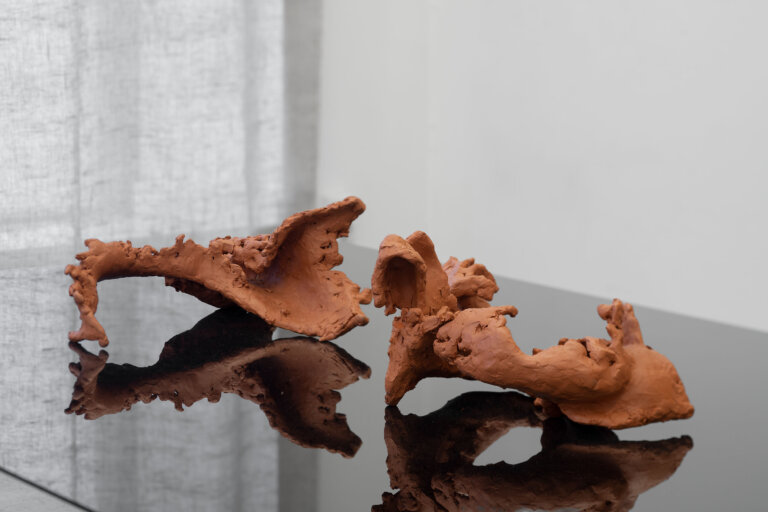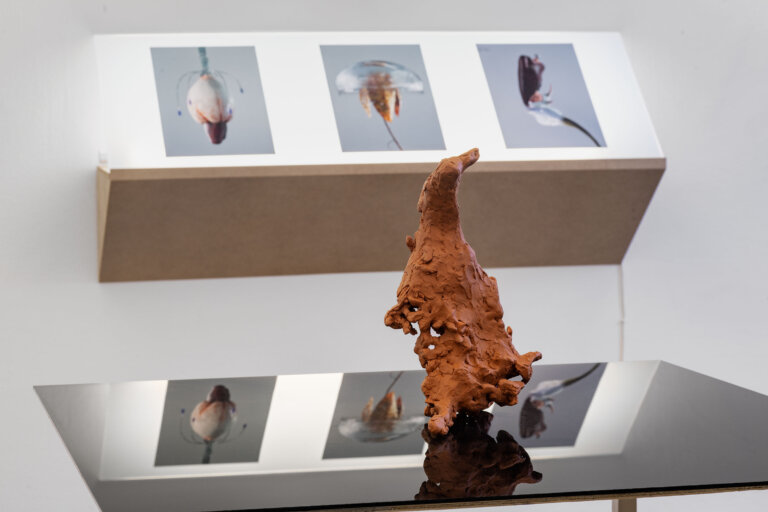In a perpetual flow of frenetic creation, the organic unites with the inorganic, the hard with the soft, the dead with the living. The Garden of Earthly Delights (1490–1510) by Hieronymus Bosch has been interpreted by art historians as a prophetic vision of how God’s creation is distorted by the destructive potency of mankind. The painting can thus be seen as a fitting allegory for our current era, in which growth increasingly resembles a random, cancerous proliferation – a violent productivity that both drives and conceals a deadly impending catastrophe. But there is also a lesser held interpretation according to which the painting is a vision of what the Biblical paradise would have looked like if the Fall had never occurred. The image would then be a counterfactual archetype – a recollection of something that was not.
The exhibition includes a series of images of objects created in a 3D-modelling software. The images are based on the German photographer Karl Blossfeldt’s taxonomic studies of plants from the 1920s, published as Urformen der kunst. But unlike Blossfeldt’s flowers, these digital models are fictitious hybrids – uncanny amalgamations of plant, glass and flesh. The images are shown together with physical objects created by combining a pre-modern divination technique with industrial prototyping clay. Models reminiscent of photographic traces. Prototypes looking like remnants. Like half remembered forms that never came into being. Or relics of whatever transformations we will leave behind.
Nils Ekman
www.nilsekman.com
Hendrik Zeitler





